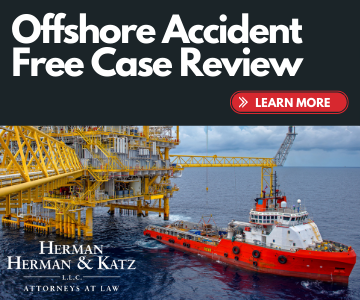
Oil and gas extraction is one of the most dangerous industries in the country, and a new report that analyzes database findings can help regulators understand how to prevent workplace fatalities in Louisiana offshore accidents.
From 2014 to 2019, 470 U.S. oil and gas extraction workers died due to job-related injuries. Many of these deaths were preventable, and better safety measures could help stop future fatalities. The Fatalities in Oil and Gas Extraction Database (FOG), created by the National Institute for Occupational Safety and Health (NIOSH) in 2013, aims to keep offshore employees safe by tracking trends in worker deaths. The database contains variables that help categorize fatalities and can be considered when developing industry standards to protect workers from tragedy.
What Is the Fatalities in Oil and Gas Extraction Database?
The FOG database finds fatalities from OSHA reports and Google news alerts. It is available online and is sortable by many factors. The website contains data grouped by state, year, industry sector, event type, and more. Studies have found that oil and gas extraction (OGE) workers face the most danger when transporting to and from oil rigs. Transportation events are the top cause of worker fatalities in the industry. The database provides more insight into transportation accidents. About half of OGE workers in fatal car crashes weren’t wearing their seatbelt, which could signal the need for better employee education. Along with vehicle and helicopter accidents, contact injuries, explosions, and cardiac events are all leading causes of death. State data also provides interesting insights: nearly half of oil worker fatalities happened in Texas, followed by Oklahoma, North Dakota, and Louisiana.
The report lists some of the challenges that come with maintaining the database. Multiple researchers are needed to keep it up-to-date. OSHA reports don’t always contain all the data required for the database, forcing researchers to gather information independently. Additionally, fatality numbers are likely underreported. OSHA doesn’t include deaths from self-employed workers, and the FOG doesn’t track deaths that result from work-related chronic illnesses. The database also only records crashes when a worker is driving their employer’s vehicle, and collisions involving a personal vehicle are excluded.
Still, the study provides insight into offshore worker deaths and how they might be prevented, which policymakers can utilize when proposing new safety guidelines. Additionally, the database lets the public know where offshore deaths are happening and why they occur. The study concludes that a positive workplace culture, safety and health management systems, and collaboration between government agencies and industry leaders are necessary to improve employee welfare.
The Dangers of Offshore Oil and Gas Extraction
The oil and gas industry is worth billions of dollars, and things aren’t slowing down anytime soon. Nearly 10 million people work in the industry in the U.S., and a large contingent are offshore workers. These workers travel to oil platforms to extract and process the oil and gas beneath the ocean floor. Offshore workers follow a grueling schedule, often working up to 13 hours daily. The risk for injury is high; many of the substances on oil rigs are flammable, and workers must handle heavy machinery that can easily maim or kill if it malfunctions.
Not all oil and gas extraction accidents lead to fatalities. When workers are fortunate enough to survive oil rig incidents, they’ll often have a long road of recovery ahead of them. Broken bones, burns, amputations, and toxic chemical exposure are injuries that commonly result from oil rig explosions and accidents. A worker who lives through an offshore accident might struggle to return to work or everyday life. After an accident, you should contact an offshore accident lawyer specializing in oil rig incidents to discuss your legal options.
Finding A Louisiana Offshore Accident Attorney
Workers often assume their employers are on their side after an offshore workplace accident. But in some cases, offshore industry companies will minimize their culpability and refuse to accept full responsibility for their role. Workers may not realize they’re entitled to compensation, especially if their employer negligently acted. Many offshore accidents could’ve been prevented if an employer acted in the employees’ best interest by adequately maintaining equipment and refusing to cut safety corners.
Suffering a severe injury or losing a loved one is an unthinkable tragedy, especially in a preventable accident. Herman Herman Katz is a Louisiana offshore accident law firm that can help decide the best path forward as an offshore worker recovers from injuries or loved ones grieve their loss. HHK acted as plaintiffs’ co-lead counsel in the lawsuit against BP after the 2010 Deepwater Horizon disaster, and we’re not afraid to stand up to powerful companies on your behalf. Our team of Louisiana offshore accident attorneys knows how to handle negotiations with oil companies and can help you get the compensation you need. Call us at 844-943-7626 or contact us online today for a free consultation.

Jed Cain is a partner with Herman, Herman & Katz, LLC. He has dedicated his career to representing injured folks and their families.

















Comments for this article are closed.